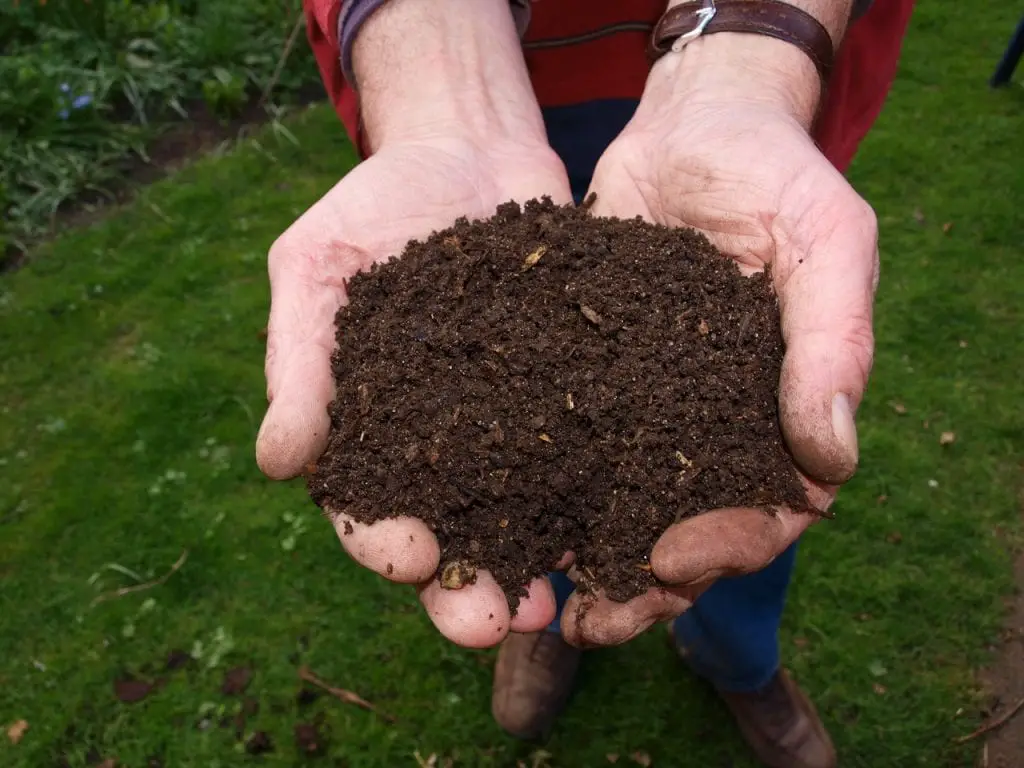
Like us humans, plants not only live on water, but also need nutrients to feed them and make them grow strong and healthy. Although the land where they are planted contains most of the nutrients they need, many times we must feed them with other nutrients.
In their places of origin, plants can get them without too many problems, but when they are grown, especially if it is in pots, their roots gradually run out of them as they almost literally use up the substrate. For this reason, one of the ways to care for and pamper our plant is by fertilizing the soil. But first we must learn the differences between manures and fertilizers.
When we are going to fertilize or fertilize the land what we do is make certain nutrients available to the roots. With them you can have good growth and better health, thanks to which it will more easily resist the attack of possible pests, as well as infections.
What are fertilizers?

Image – Wikimedia Commons / Sten Porse
It is often thought that fertilizers are products that are used solely to nourish the soil, but that is not entirely true. The roots generally grow in such soil, where there is a certain amount of nutrients available, which varies depending on the type. For example, in clay soils iron is not usually as present as in acid ones; hence it is so common for acidophilic plants to have iron chlorosis when planted in soils like this, with a high percentage of clay.
When you pay, what you do is throwing organic products on the groundthus providing it with nutrients that the roots can then absorb.
Types of fertilizers
The fertilizers can be of animal or vegetable origin. Both have been used since the beginning of agriculture, although today, by knowing better the properties of each one, we can be more selective and choose the one that suits us best:
- Green manure: they are plants, usually legumes, that are cultivated to later be cut and buried. When they break down, they release nutrients, especially nitrogen. Learn More.
- Herbivorous animal manure: They are the excrement of animals that are mainly kept on farms. The nutrients that each one provides depends on the diet of each animal:
- Horse: provides essential nutrients, but in a low percentage, less than 3%. It is used more to improve the sponginess of the soil than to fertilize it.
- Chicken: it is rich in phosphorus (4%) and especially in calcium (9%).
- Sheep: contains a lot of calcium (8%).
- Guano: they are excrements of seabirds or bats. It is very rich in nitrogen, phosphorus and potassium, so it is one of the best natural fertilizers that exist, since these three nutrients are the most required by plants.
It is commercially available in liquid form (for sale here!), in granules (for sale here!) and powder. Learn More. - Earthworm humus: it is the result of the droppings of the worms. Contains nitrogen, phosphorus and potassium. You can get it here!. Learn More.
What are fertilizers?

We must bear in mind that both the compost and the fertilizer are responsible for nourishing the soil, however the fertilizers have organic or natural active principles, while fertilizers are artificial.
Chemical compounds or fertilizers are solubilized in the soil in contact with water, to later be absorbed by the roots of the plants.
Types of fertilizers
There are many, and there will almost certainly be more and more. Fertilizers for almost all types of plants have now been created to meet their most important nutritional needs. Thus, we have:
- For bonsaiBonsai are plants that live in mini pots, so they need a low nitrogen fertilizer. Therefore, one has been created with NPK 3-6-7, which will allow them to be healthy (for sale here!).
- For cactus: in addition to nitrogen, phosphorus and potassium, they contain amino acids that will help them grow healthy (for sale here!).
- For orchids: these plants are very sensitive, so this fertilizer is gentle, and also contains plant extracts and guano (for sale here!).
- For acidophilic plants: it is rich in nitrogen, phosphorus and potassium, with a ratio of 6-5-8, they also contain essential micronutrients, such as iron (for sale here!).
- For palm trees: this type of fertilizer has a composition NPK 7-3-6. Depending on its formulation, it also contains some micronutrients (for sale No products found.).
- For rose bushes: this type of fertilizer is usually rich in nitrogen, which favors the growth of the leaves, as well as potassium (for sale here!).
Which is the best?

Although I always recommend using natural products, since they will not cause side problems or collateral effects, in the case of some plants we can use both, compost and fertilizerto improve the quality of the substrate and keep our plants always well cared for.
In any case, it is important to read the instructions for use of both the fertilizers and, above all, the fertilizers, since otherwise there could be a risk of overdose.
I hope it has been useful to you 🙂.

